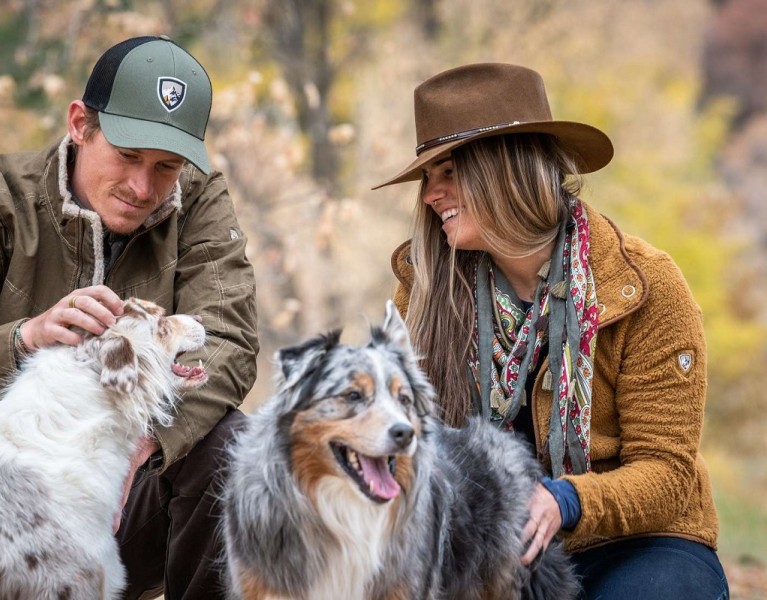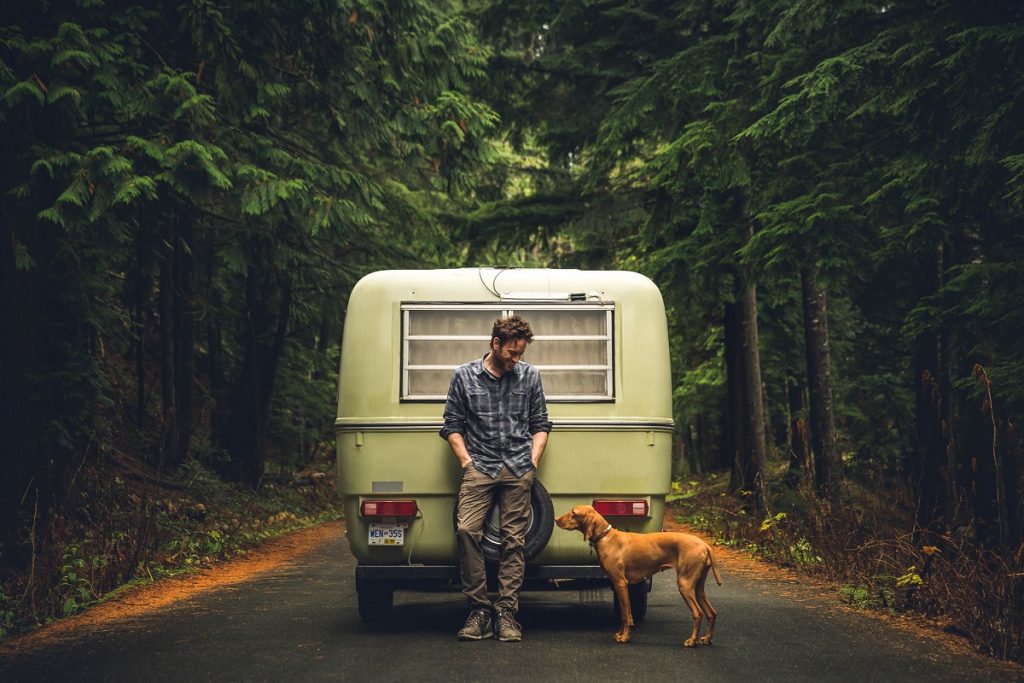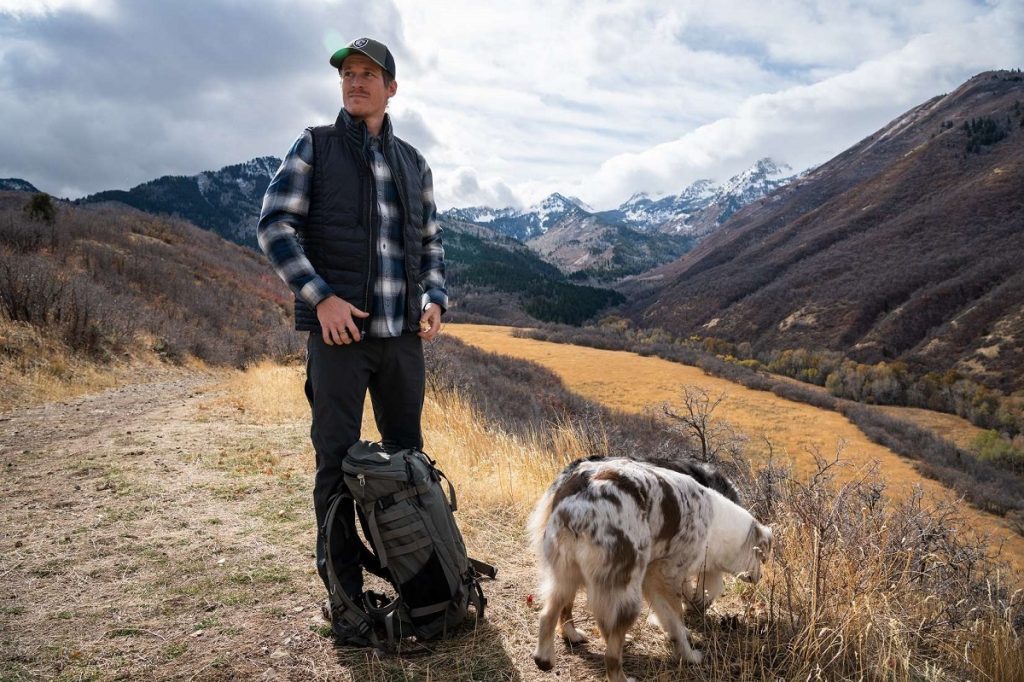
Happy Tails: Hiking and Gear Tips for Your Adventurous Dog
Table of Contents [Show]
What does it take to turn a city dog into a trail-hardened hound?
You already know that well-made, activity-appropriate clothing and equipment makes all the difference out in the wild. The right gear will help prevent injuries and discomfort, and keep everyone happy and safe. The same principles apply to your pet. Here's how my pack and I have managed to hop the dog park fence, hit the trails, and leave the whining to our human hiking buddies.
Dog backpack
Let your dog share the load with a well-fitted trail pack. The average healthy dog in good condition can carry up to 25% of its body weight, including the weight of the pack. I've tested a few on dogs of varying breeds and build, and Ruffwear makes my paws-down favorites.
These are my tips for dog packing success:
- Bring a lightweight fishing scale to ensure your dog's saddlebags are balanced front-to-back and side-to-side.
- Have your dog carry items you can easily distribute or subtract.
- Prevent shifting loads by adding lightweight "stuffing" to each compartment. For example, use your dog's camp towel, or your spare socks and gloves.
- Choose a pack with bright colors and reflective details so your dog is easy to spot. Safety orange is ideal, especially in the fall when you're sharing the outdoors with hunters.
- Get your dog accustomed to his pack on routine neighborhood walks. You'll be able to fine-tune fit adjustments and check for any pressure spots or where the material causes irritation. Your dog will also learn to navigate obstacles above and either side of him.
Booties
If your dog spends more time romping on turf than walking on paved roads or concrete sidewalks, they might need the protection dog booties offer. They're also helpful if you're planning a trip along thorny or rocky trails or sun-baked slick rock. I recommend Ruffwear's GripTrex or QUMY Upgrade Dog Shoes; both models are breathable, have sturdy "toe boxes" and soles, and they're lightweight. Ruffwear and QUMY both offer booties for snow and ice, too.
Hands-free leash setup
You'll always have more control over your pet if you're directly holding your dog's leash, but there are times when you'll want your hands free—especially if you use trekking poles, or you're beating back brush on an overgrown trail. Look into waist-belt and leash combos, like those used for joring sports, in which dogs pull their people on skis, skateboards, bikes, or kicksleds. They're popular with trail runners, too.
You can also hook your dog's leash to sturdy D-rings on your backpack's hip belt, but avoid attachment points higher up your body, especially if you have a strong or large dog that can throw you off balance.
Collapsible bowl
"As a general rule, dogs require at least one ounce of water per day for each pound of body weight," advises the American Kennel Club in an article about the signs and prevention of doggy dehydration. Pick up a couple of lightweight, collapsible Outward Hound Port-a-Bowls for your pup. They're pretty cheap at less than six bucks each, so you can keep one for water and the other for dog food.

Hiking in bear country? Store your dog food, treats, and dog food bowl in scent-proof baggies while on the trail, and stash stuff with all the good smells in your hanging bear bag.
Favorite toys
New environments and expectations can stress out our pets, even if they're having the time of their lives. Pick out and bring along their favorite lightweight "pacifying" toys, and leave behind flying disks and toss-toys that often end up getting lost. If your dog absolutely HAS to play fetch and your vet has warned against the hazards of sticks, choose a brightly-colored, buoyant toy so you can go play bird dog when your pooch calls it quits.
Backcountry dog bed
My bony-butt Vizsla has an orthopedic bed at home, and the first time I took her camping she threw a hissy fit when she learned she had to sleep on the thin tent floor. After three nights of passive-aggressive pacing—and pawing at my comfy sleeping bag—I ordered her very own backpacking dog bed from Outrav. Shaped like a pocket, it gives her a comforting nest while insulating her from the ground and gives my prissy little princess plenty of padding from pea gravel.
Leave No Trace Dog Waste Supplies
What do you do with all that dog poo? Pack it out just as you would your own! Dog feces can spread diseases and parasites to wildlife, and it's no less disgusting to step in than human waste. Yet, way too many dog owners think it's "natural" to let their dogs dump n' dash.
For the scoop on dealing with backcountry poop, read our article Wilderness Encounters of the Turd Kind, which includes resources for handling dookies, whether human or canine.
Camp towel
Trust me, you'll only forget your dog's packable towel once if he's prone to rolling or stepping in mud, bear scat, or poison ivy ten minutes before it's time to hit the sack. Any quick-drying, lightweight doo-rag will do but I'm partial to Sea to Summit's Tek Towels. Yeah, they're a bit posh, and they're made for humans, but they come in different sizes and their microfiber content really does help grab debris other camp towels can't seem to clean up.
Don't forget to wipe down your dog before putting her harness, pack, or booties on after a swim or a trek through burr and bramble patches. Conditions that irritate your skin will chafe your dog, too.
First aid kit, pet safety skills, and important paperwork
Did you know the Red Cross offers an online pet first aid class? It's only $25, and you'll learn valuable skills in just 35 minutes and get helpful tips for building a backcountry pooch's first aid kit. Don't forget a TickEase tick removal tool and some sort of blood-clotting or wound-sealing agent.

Ask your vet to help you choose the best flea and tick preventative, and let them help you decide if you should give your dog the rattlesnake vaccine. They may also be able to recommend a reputable rattlesnake avoidance trainer. Whenever you travel with your pet, you should have his current vaccination documentation and, if possible, a recent health certificate. The latter might require a checkup, but it never hurts to have your vet green-light any new sport that requires a lot of physical activity.
Location tech
You might have a SPOT personal location beacon for yourself, but do you have one for Spot? The most popular GPS devices work great in town, but when you're outside of cell range I recommend investing in equipment favored by hunting dog owners. Garmin offers such systems such as the Astro 900 handheld/collar combo, but if you want to save several hundred dollars you can always invest in a sturdy leash, reflective collar, and waterproof strobe light. If your dog is microchipped, he'll have a better chance of finding his way home if he's lost his collar but found new two-legged friends.
If you do have an extra SPOT Gen3 or SPOT Trace, you can MacGyver a means of attaching one or the other to your dog's collar. You might not be able to locate a lost dog while you, too, are away from tech, but with your own SPOT messaging-capable personal location beacon, you can message a friend to help track down your buddy.
The 411 on area health hazards
Dogs can get giardia just like we can, and bodies of water with blue-green, algae-like cyanobacteria may be deadly to your dog. Headed to new territory? Check out community social media pages or ring up a vet close to your intended adventure for advice on local hazards. While you're at it, get recommendations on emergency vets in the area and pointers for finding the best dog-friendly trails and in-town businesses.
Go play!
You're bound to build a stronger bond with your dog when you spend time with him out in the backcountry. Respect his physical limits just as you do yours, and remember that all the sights, smells, and sounds along the trails might blow his little mind. Let him take the lead on the first few outings, at his pace, and try to imagine your surroundings through his point-of-view.
But please. Draw the line at sensory immersion when you encounter any piles of bear poop.


